16 min read
A Brief History of Beauty Standards
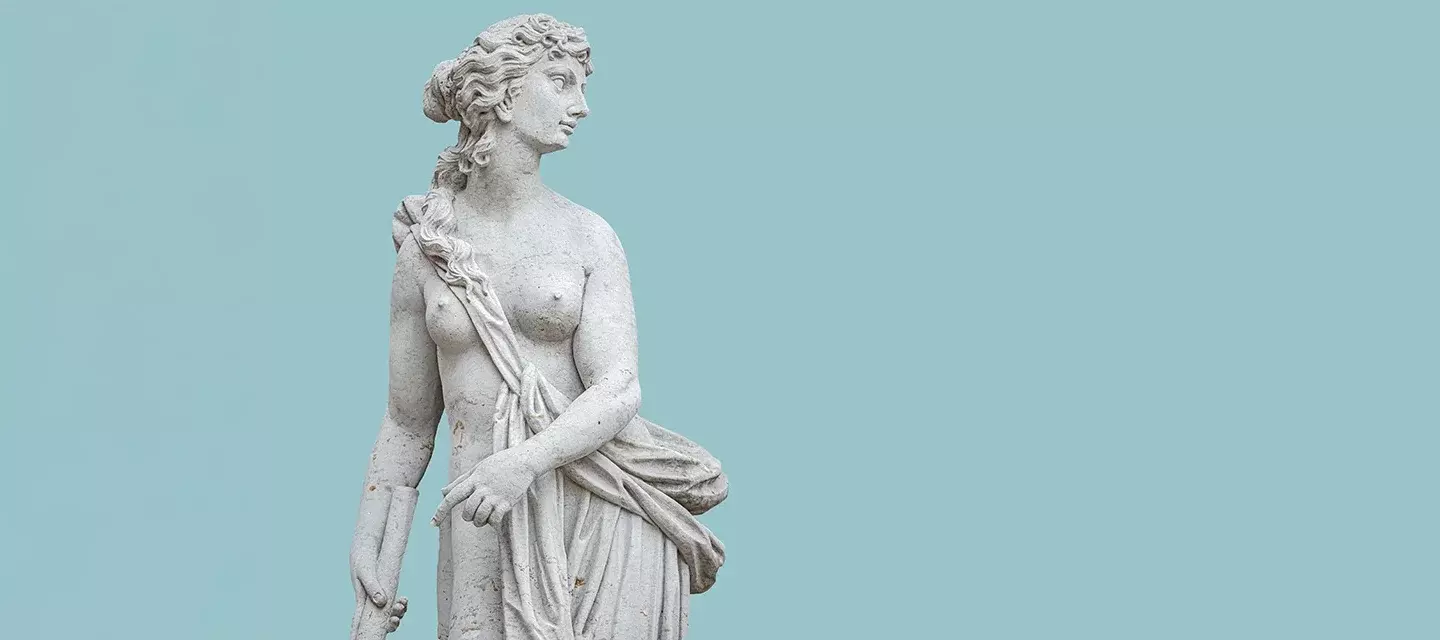
How long has it been since we've allowed ourselves to love our faces and bodies instead of searching for flaws in their design and presentation, judging ourselves through the lens of what our society has convinced us is beautiful? The current beauty standards around the world are reflective of our moment in time. Still, they are by no means absolutes but temporarily true variations on a theme with infinite interpretations through time and space. Who was the most beautiful woman in history? It depends on from which point of history you're looking at it.
Universals of Order & Non-verbal Communication
Some things are universal in basically all human societies, and discussions on beauty have been going on since there was language and fellow human beings to evaluate. Certain things, such as that youth is beautiful, are cross-cultural universals. This is common sense. Anything that shows more order and less entropy is beautiful, as echoed in the writings of an Italian priest and a very wise man, Thomas Aquinas. He was thinking about beauty as a way to experience the intimations of the divine, which we cannot fully understand but can partake in experientially. For him, beauty was order, a thing that had integrity, proportion, and clarity. Plato and the ancients had similar ideas and applied them to everything from well-put-together physical forms to clear and logical ideas.
But far from the realm of beauty as the only way to grasp the divine or the realm of ideas lies our everyday physical existence, where we are judged (and judge others) by what we see. We can't help it; we are wired to do this. When two people meet for the first time ever, most of their communication falls to a non-verbal "reading" of this stranger. We evolved to asses people and make snap-judgment decisions about their character and capabilities based on a split-second assessment. Once necessary to discern friend from foes (as we could not have checked them out by stalking their social media persona way back when), it remains a part of our inbuilt social mechanisms. We needed to asses people quickly enough to remove ourselves from a dangerous situation and survive long enough to pass on our genes forward in a rough world (you're living in the safest time in history, BTW). A researcher of body language, Albert Mehrabian, says that more than 90% of communication is nonverbal, that is, 55% nonverbal, 38% vocal (your tone, inflection), and words alone account for only 7% of understanding. We're always checking each other out, and what we look like matters. It has always mattered and always will (until we move to another higher plane where we're just floating blobs of energy or something).
Since it matters, cultures and countries have established rules on what is considered beautiful. Fluid and malleable, the rules changed and diverged, sometimes even in neighboring countries, and from decade to decade, they changed radically. You may judge yourself "objectively," which means by the learned biases and standards you've picked up through your culture, upbringing, and societal norms, but no matter your body shape or "flaws," you would have been the ideal at some point in history. What you judge so harshly now would have been celebrated.
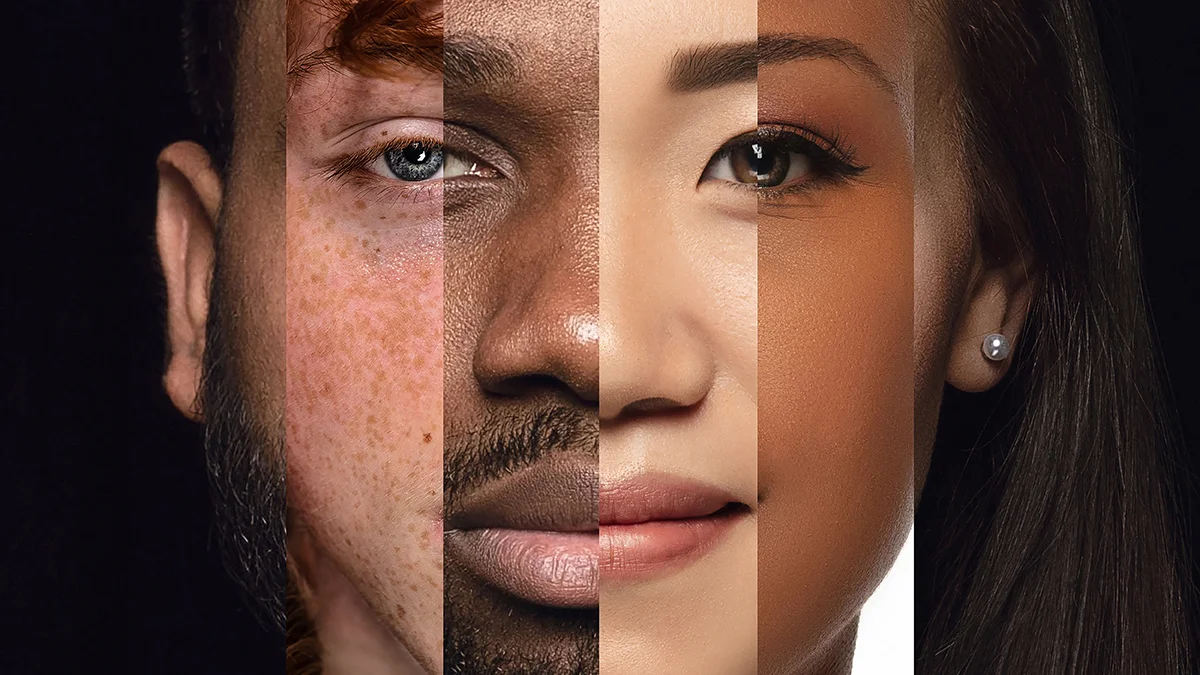
Keep in mind that this short run of beauty standards through history will, at some points, be marked by the habits of the upper class, who had time and resources to indulge. Peasant or ordinary workers would have had to labor for most of the day - for themselves or others - and their practices would have changed more slowly. Eventually, once fashions started to change faster, the lower class would try to adopt traits from the upper classes and mimic opulence, which is the moment when the upper class adopted a new fashion to distinguish themselves from the lower class. This is called the trickle-down theory in fashion - how trends and aesthetics get disseminated from top to bottom. So, take everything you learn here today with a grain of Himalayan pink salt. We'll also mostly be focusing on Western beauty standards. Some things we are sure of, some we'll never know for sure, and some are still up for discussion. Still, the history of beauty was based on informed guesses and reconstructions from the arts and writings of the period (if available). It can give us an overview of the inconsistency and fluidity of the concept of beauty and skincare through history. Somewhere, at some point in the timeline, you would have been a goddess - unibrow, thick thighs, stomach rolls, and all.
From The Paleolithic to Postmodern Beauty Standards
Paleolithic's pudgy perfect
Were you to stumble into a regular neighbor's cave in prehistoric times, you would find his walls and (most likely) family or tribe members smeared in natural colors such as ochre or charcoal, equally useful as wall art and self-painting associated with rituals or status. You would also see the aesthetic inclinations in early humans and Neanderthals, who used shells, bones, and stones in ways that had no practical use and were purely ornamental. The ideal female body of the Paleolithic is by no means a delicate, fragile flower. She couldn't have survived the harsh realities of life. The voluptuous Venus of Willendorf would have been considered morbidly obese by our Western beauty standards. But for the paleolithic hunk, she was the epitome, the ideal of femininity and beauty, a fertile vessel giving birth to the world. Her large breasts, jiggling bum, and thick thighs that rub together would have brought all of the boys into the cave yard.
Egyptian eros
Starting with the first cosmetics (that we know of) and delving into makeup and elaborate wiggs, Egyptians also used kohl as an eyeliner to emphasize the eyes and protect them from sun glare and any of the roaming infections of the time. At the same time, henna made an appearance as an excellent natural dye for hair and nails. Egypt was more or less a society of equal gender opportunities, where women were equal to men in the eyes of the law. However, what was attractive in the male and female spheres differed, and attraction arose from opposites. A reddish-brown skin tone and muscular body with broad shoulders were the most conventionally attractive features of a man, while women were most stunning with a honey-golden tan and a soft, curvy, squeezable body. You were the perfect eye candy for your angular male counterparts if you had a pronounced round stomach and a slightly saggy, jiggly back side. The modern idealized six-pack and quarter-bounceable derriere would have been seen as leaning towards the masculine side.
Mesopotamia's hourglass
Personal appearance gained ever more importance, and cosmetics and makeup grew more diverse. Mesopotamians captured the senses of their romantic interest by producing the first perfumes ever by distilling wildflowers, herbs, and natural oils. They, too, wore primitive makeup, and the ideal body figure for a woman was on a trace of an hourglass figure as the males were measuring their attractiveness on how closely they resembled Gilgamesh, a bearded, tall, muscular giant.
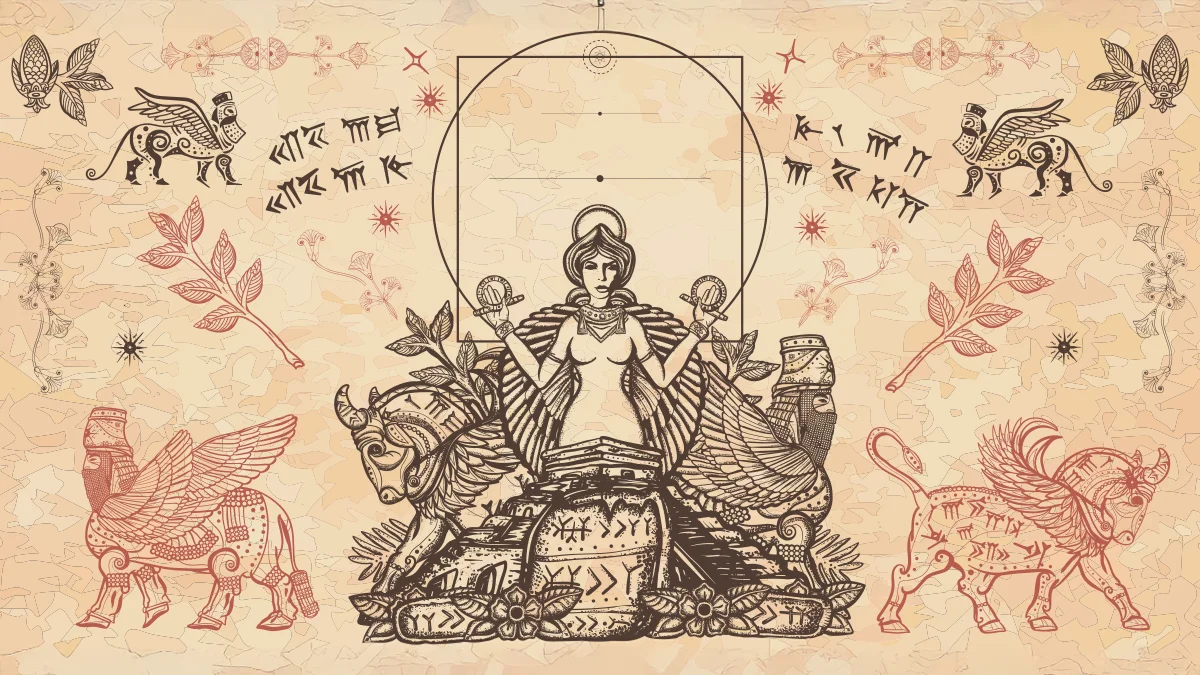
The unibrowed Greece
Greeks were interested in harmony and proportions of facial features and even developed physiognomy, a science of reading a person's character from their physical characteristics. Regarding the face, the Greek beauty standard was what is today known as a Greek nose, a bit larger, intense, straight nose that curves a bit downward, which would be considered "big" today. So, is a big nose attractive on a woman? Greeks say yes. They also liked the low forehead and well-defined arched eyebrows. If you were a unibrow, even better! You'd be a hit as it signified you were intelligent and desirable.
A strong, straight chin was valued much higher than a dimpled one, and blond hair (as the Gods had) was all the rage, so bleaching with vinegar was quite common. Unfortunately, it damaged the hair and caused intense shedding when overused. The often toxic, lead-based makeup was reserved only for the hetaera, the courtesans, while wives were expected to be clean-faced.
For Greeks, beauty was not just physical. The Greek beauty standard was intertwined with virtues such as being good, kind, and intelligent. The Greek statues that have survived the millennia and we admire today mostly show no single person but are a sort of mix of desirable physical traits created by combining and averaging a crosssection of the people's real physiques - in a way striving to goodliness but not wanting to offend anyone (maybe that's behind the inclusive micro-penises on statues). They were not created to be sexualized but admired. Athleticism and sport were as close to religion as ever. Interestingly enough, males were under great pressure to have a perfect physique. At the same time, women were admired for their small and firm breasts and some meat on them. Even the great statue of Aphrodite crouching down depicts some lovely stomach rolls that extend to a back roll in the making as she leans on one side.
BONUS INFO: Romans followed the leader here. Large eyes, light hair, a strong nose, small curvy lips, a bold chin, and wavy or curly hair are so common in the Mediterranean. Male bodies were muscular, and females were supple and curvy, with small breasts and pale skin that signified a noblewoman rather than someone who had to toil under the harsh sun in the fields. Exfoliated, healthy, and glowing skin was the norm and easier to come by than ever, thanks to the ever more popular and common bathhouses that gave good scrubbing, oil pomades, and exfoliating the rough skin of the body. In the 1st Century, the Roman poet Ovid also collected the cosmetic advice of the Era and wrote the first manual on how to be beautiful.
Macabre pallor of middle ages
A millennium between the 5th and 15th centuries was marked by an obsession with a pallor to denote social status. The paler you can get your skin, the more you are perceived as a lady of leisure, well, at least for as long as you can keep death from mercury and lead poisoning from your skin-lighting concoctions at bay. Those of us with a high forehead would be adored as the most beautiful women around. Those who weren't that lucky would revert to some good old hair removal, plucking their hairlines back to get that sexy large forehead. They wouldn't have called it "sexy," though, of course, because sex was a dirty, dirty thing in an ever more religious community, which also frowned upon vanity as a sin, but that didn't stop people from wanting to look good by the beauty standards of the time.
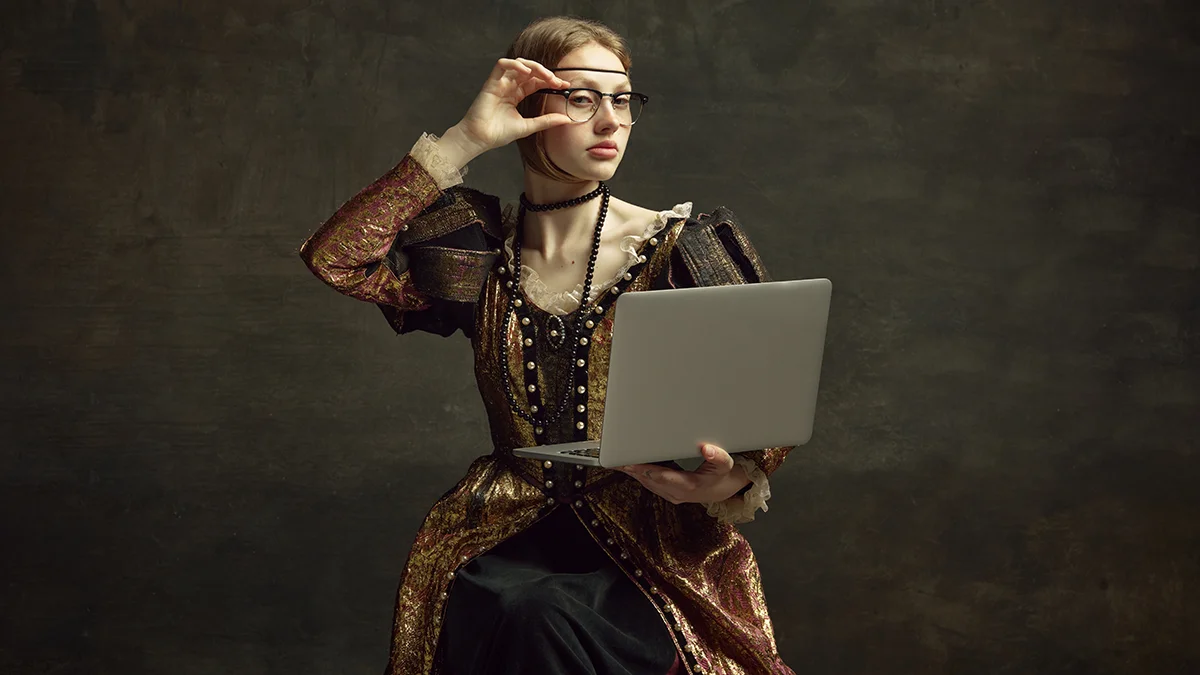
BONUS INFO: Had you been born in the 9th and 10th centuries, it would have been quite fortunate to be a Viking maiden. Not only could you legally own land, divorce your Norse-god-looking Viking husband, or choose to go with men and raid and pillage as you please, but you would also have been very clean for the standards of the time. Viking women took pride in bathing once a week, and their long and shiny hair was their prized asset. if you wanted to show off how clean and well-off you are, you would have showcased your snow-white arms, which sent a clear message to your peers.
The pear-shaped Renaissance
When swooning over the canvases of the Renaissance, we see soft, pale, delicate, tiny-mouthed ladies who kept on tweezing to keep the spirit of pronounced, large foreheads alive. Blondes still had the most fun, but so did redheads, and women continued to dye or bleach their hair to get wavy golden ringlets. The skin was still oh so pale (and hairless) but now insinuating health by a tinge of rosy tones on the lips and cheeks. Pear-shaped ladies with small breasts (that women additionally flattened with stiff, tight corsets) and voluptuous hips and thighs got the most poetry from suitors. Fleshy arms, legs, and a nice roundish, fertile stomach also made the juices flow. Suppose you appeared in Renaissance Italy a size zero and all toned from your gym challenge. In that case, you'd most likely be pitied as an unfortunate. Italy and France also started to create a cosmetics industry with some killer hits such as the Venetian ceruse that exterminated its fans. Wigs and hairpieces became fashionable playthings, and the most elegant ladies wore thin eyebrows and no eyelashes, which would get removed by a lady's little helper... arsenic.
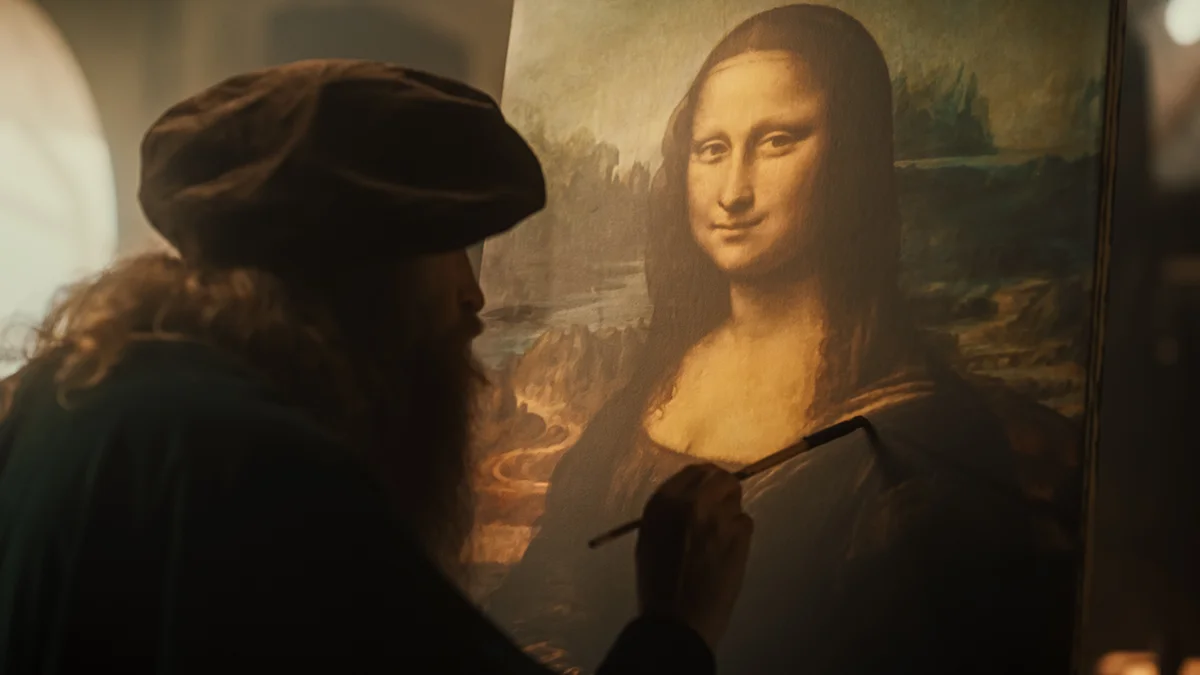
The 18th-century revival of Greece.. sort of
A homage to the Greek obsession with proportion and measure, the 18th Century loved their women perfectly moderate. Somewhat fleshy but not fat, a sizeable companion, but not too tall, made up, but still natural. Some features they still loved from a previous era are the long neck and paleness. The fondness for larger breasts grew again, and the waist was tapered. The nose was a prominent facial feature, and the lips were small and childlike. On the other side, a more dramatic line of fashions of the time started brewing with elaborate powdered wigs and faces with applied birthmarks and rouge on the pale powdered faces. Right about this time, France took over as the world's perfume capital, as the scent of a lady was becoming an ever more critical element of her attractiveness.
Victorian Era of a damsel in distress
Queen Victoria was quite anti-makeup and considered it only suitable for actresses and prostitutes. And, if the most significant influencer and thought leader of the time tells you to go natural, you do. In Victorian beauty standards, pale skin, and light hair were still desirable, so women used homemade cosmetics, like lemon juice and egg whites, while still dabbling in poisonous cosmetics to lighten their skin tone and hair color. This time is the height of men wanting their women to look delicate, feminine, curvy, and frail (even borderline sickly), and they were to be protected by strong and resolute gentlemen. A few women still chose to wear some ruge and eyeliner that looked even more prominent on their pale, sickly faces. The s-shape silhouette was THE Victorian beauty standard, achieved by tight corsets that would push the breasts up as layers of fabric and ruffles accentuated the junk in the trunk to extreme sizes. The tight corsets that created the exaggerated curves often made breathing hard, and this is where we get a trope of a frail psyche of ladies fainting at any occurrence of upset. It was more due to the breathing difficulties and days spent in restrictive corsets than the innate feminine lack of emotional resilience.
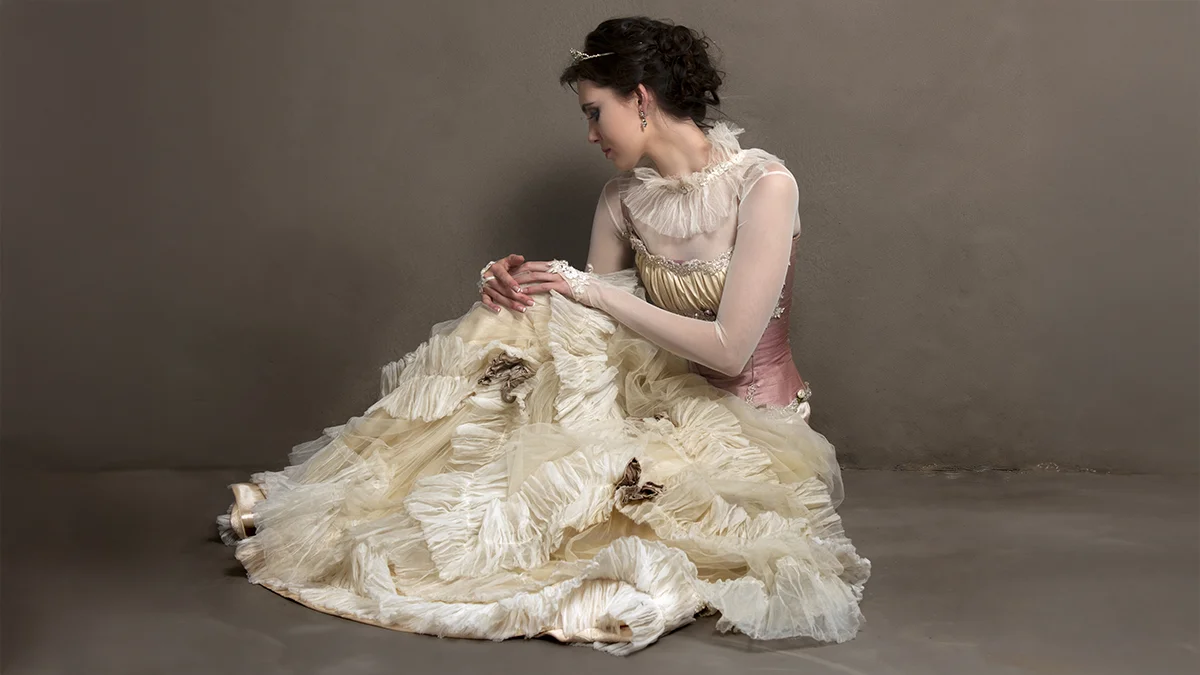
Androgyny and skincare boom of early 20th Century
As fashion speeds up, each next Era responds to the previous specific cultural model to create new ways of caring for our appearance and new ways of behaving to embody the perfect feminine. Leaving the damsel in distress to the history books, the women of the early 20th Century slid more towards androgyny. 1920s beauty standards had women starting to wear pants (and getting arrested as "cross-dressers" for it). Corset and the curvy figure it provided were nowhere in sight, and a flat, slender figure became the norm as women were fighting for equality and the right to vote for their future. The feminine curves were out of vogue, hidden and flattened by loose flapper dresses. In a further break with feminine stereotypes throughout history, women cut their hair short, and the Roaring 20s introduced the bob. But still, this was also the Era of the first portable lipstick in a tube and the rise of the large cosmetic and fashion houses we know and love today, such as Max Factor, Helena Rubinstein, Elizabeth Arden, and Coco Chanel.
The War emaciation, the Hollywood glamour, and the blond bombshell
World War Two and the Great Depression were eras of survival mode, with women doing their best with what they had, which was basically nothing. Everything was rationed to support the war effort, including food, so the slightly undernourished women started reappropriating old clothes, drawing nylon seams at the back of their legs with eye/eyebrow pencils, and altering men's suits they turned into dresses. We entered the age of a very sexy look of padded shoulders. The economy recovered, and the film industry boomed, ushering in the Golden Age of Hollywood, with bright red lips, sculpted hair, winged eyeliner that looked theatrical on the screen, introducing the femme fatale of dramatic beauty and strong femininity, and the fun blond bombshells like Marilyn Monroe, who flaunted the perfect hourglass figures. An ample bust, a perky wide bum, a small waist, a carefree, somewhat ditsy attitude, and perfect ringlets of blond, bleached short hair were it. Cosmetics become ever more available, and if you weren't blessed with (or can't fake) an hourglass figure or the intense classy beauty of the Marlenas and Avas of the screen, you could always try to look your best and keep up appearances.
The Hippies, Diversity, Fitness, and Plastic
Breaking with their good housewife, keeping-up-with-the-Joneses, fully made-up mom, with curlers in her hair, cooking pot-roast and smiling due to cocktails and Xanax, the 60s and 70s young women went all natural - letting hair (everywhere) roam free. They didn't care about perfumes, hourglass figures, or gentrified calm neighborhoods. The ideal hippie would have free-flowing hair or afro, be relatively slender, quite androgenic, and all races were welcome and appreciated in a new counterculture that just wanted everybody to get along, braless and groovy.
After the summer of love, and the somewhat soft bodies and possible lack of protein due to widely adopting an uninformed vegetarian diet, the 80s brought a fitness craze that epitomized incredibly lean and muscular bodies. Fat in any form became the enemy on the plate and in the body, and the ideal female physique was that of taut sin, toned muscle, and no jiggly parts. Darker skin became attractive now. As we no longer needed to labor in the fields, a tan now meant the opposite of what it did throughout history - it meant you had leisure time to go out in the sun and do sports to stay in top shape. Bronzers were an absolute hit, while makeup and exercise styles exploded with (often neon) colors.
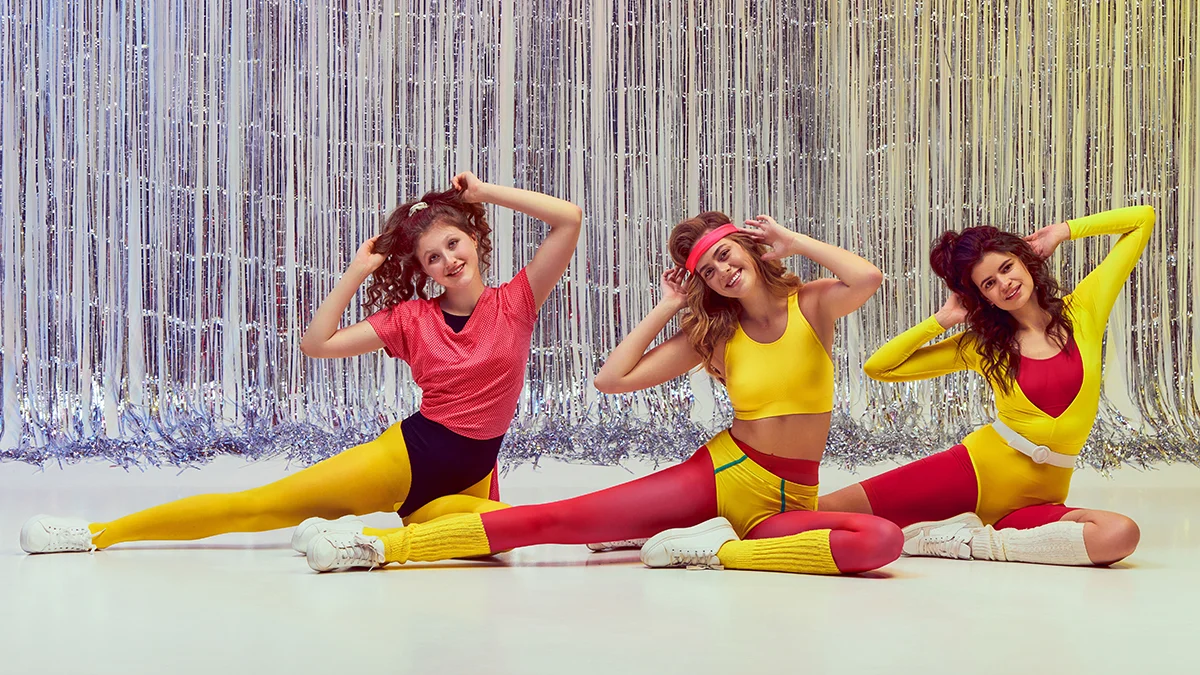
As the 90s rolled up, we've arrived at the first time in history where cosmetic surgery could completely transform bodies and faces. It was an unprecedented moment of innovation with Botox, facelifts, and silicone implants, which may have gotten a bit out of control in testing its abilities, creating living Barbe dolls that nature cannot produce as new female ideals.
21st Century, inclusivity, anything goes, and digital hyperrealism
The history of beauty has now crescendoed in radical inclusivity of Western beauty standards. All are welcome to magazine covers, regardless of race, disability, body shape, or size. Some of this inclusion is still to be desired, as it is inevitable that the image of an ideal woman reflecting our current circumstance is a young, slender woman with neotenous (childlike) features such as glass skin, pouty lips, big eyes, and a small nose. The rise of digital capabilities, AI, CGI, retouching, and www availability of augmented porn stars and gaming heroines may take this idea to the extreme and project an unreal and hyper-exaggerated idea of a conventionally attractive woman back into society who created it; real women cannot attain this artificial caricatured feminine traits without cosmetic interventions.
Skincare is more important than ever, and after decades of revelry in all sorts of synthetic compounds, consumers are demanding a return to clean beauty and natural ingredients enhanced by modern science. The 21st Century is also the first time in history when medical treatments, beauty, and anti-aging technologies are available as an at-home option thanks to the new beauty-tech brands democratizing beauty and making the dream of chasing your ideal self accessible to ever-growing masses of women and men.
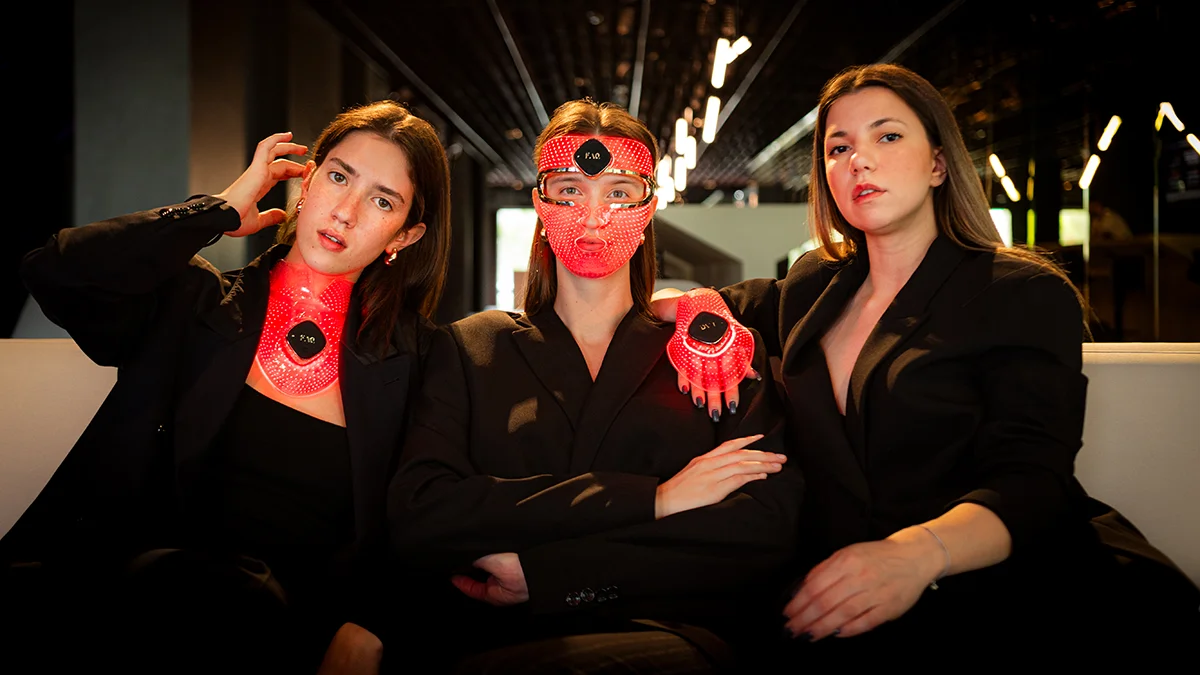
At the end of the day, we contemplate the beauty standard of today, even the somewhat underhanded aspirational liberalism, keeping in mind all of those we've left in the rearview mirror of history. We understand that what we feel more or less pressured to follow and conform to in our surroundings, or the messages filtering in through the global system of information, are just current slices and an amalgam of vague ideas distilled through popular demand. They are a brief timestamp on an infinite Moebius strip that keeps going to infinity. There is no one solution, no single final destination to reach, with a sigh of relief at the end. You will always be somehow found lacking in a world of surgically and digitally augmented personas and images. You'll never appeal to everyone; you may not ever be a muse in your average cup size, non-standard bum size, real skin with blemishes and enlarged pores, or that nose your family tree gave you. You may never start a war or launch a thousand ships, but what does it matter? Work so hard at what you find meaningful and love that your face ends up on money rather than paying attention (and cash) to what doesn't serve or grow you.
10, 50, a hundred years from today, what we now consider beautiful will seem as strange as how we feel about organ-crushing corsets, arsenic eyelash removal, or Chinese foot binding. Times change, and beauty standards and symbolic characters we play within society shift with them. in all that matters in life, these are very much irrelevant. They are a visual game. Remember this the next time you feel ashamed or envious due to your clash with the "standard." After all, "standard" is just an average, the least common denominator, with synonyms such as "common" and "ordinary." Excellent to have when producing a sustained quality of goods and services, but not so much in encompassing the wonderful uniqueness of a human. Stay curious, fearless, and interesting, and enjoy living in your skin.
Up to 50% off FOREO Gift Sets: code MYSAUNWRAP
Bundle Wonderland from Dec 3 - Dec 31
It is the most wonderful time of the year when we jingle and mingle, and the gifting fever is the only thing louder than bells and buzzed uncles at family gatherings. Ho-ho-holiday home spa beauty gifts just got all bundled up into FOREO gift sets in The Bundle Wanderland. From Dec 3 - Dec 31, the holiday train choo-chooes by with an extra 35% off FOREO favorite devices and up to half off exclusive skincare with the code MYSAUNWRAP.
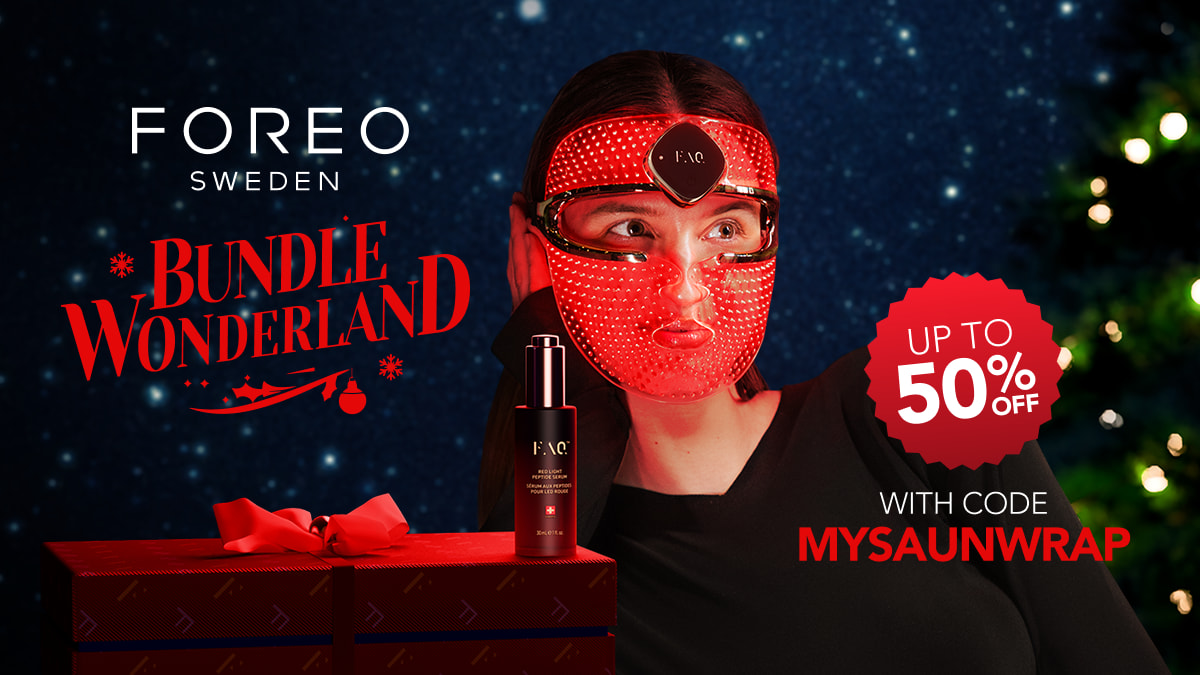
The impressive big-saver holiday skincare gift sets will delight your bulimic wallet and make you instantly glow with holiday cheer.







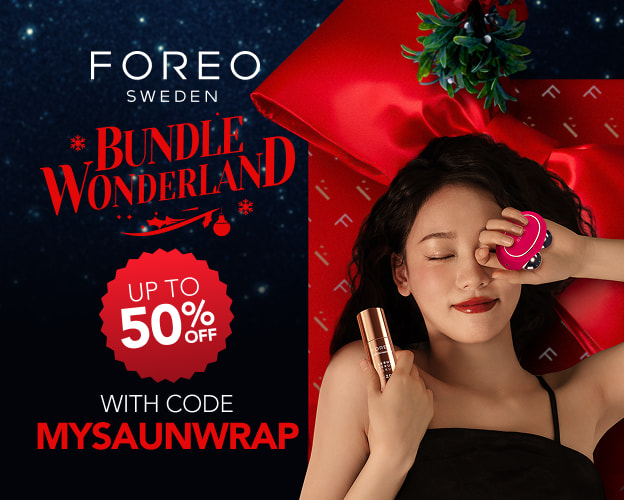
Comments
6 comments
Leave a comment